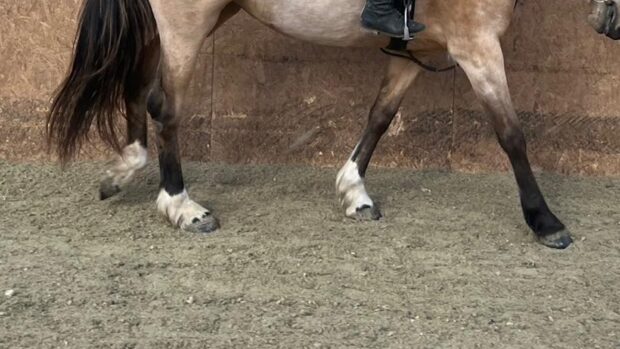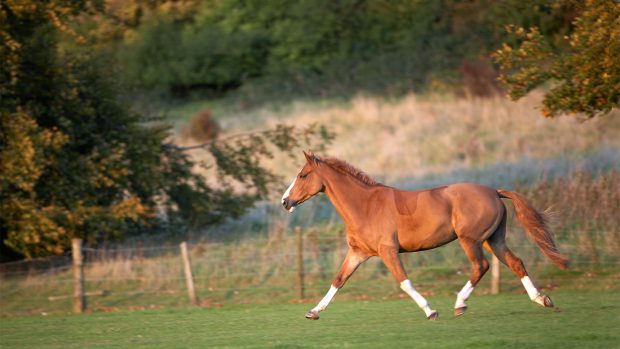The two small bones that lie at the back of the fetlock joint are called the sesamoid bones. These bones play an important role as part of the suspensory apparatus supporting the fetlock joint. This apparatus also includes ligaments that lie at the back of the cannon bone and pastern.
The suspensory apparatus acts like a sling on to which the fetlock joint sits and, as a result, much of the weight of the horse. This system allows the horse to bear weight without having to use much muscle effort.
Slow-motion videos of horses galloping demonstrate why the suspensory apparatus is vulnerable to injury. At high speeds the fetlock “drops” close to the ground because much of the horse’s weight is taken by the “sling” of the suspensory apparatus.
The forces on to the bones and ligaments of half-a-ton of horse galloping at 45mph are considerable, and it is not surprising that injuries commonly occur. They can occur anywhere along the length of the ligaments and bones of the suspensory apparatus.
Sesamoid injuries are common following trauma, such as kicks or strains, and are most common in horses regularly working at fast speeds, such as racehorses.



